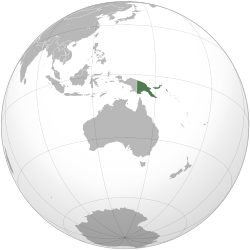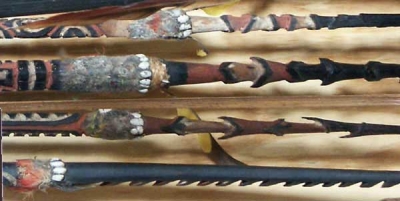Barbed arrows (1900.55.324)
 Papua New GuineaBarbed arrows from Papua New Guinea, Oceania. Collected by Norman Hardy. Given to the Museum by Robert Willkins in 1900.
Papua New GuineaBarbed arrows from Papua New Guinea, Oceania. Collected by Norman Hardy. Given to the Museum by Robert Willkins in 1900.
These colourful, carved and barbed arrows are from Papua New Guinea. Bows on the island were usually made of palm wood but the large bow accompanying these arrows is made of bamboo, a type attributable to the Trans-Fly savannah and grasslands regions to the east of the Papuan Gulf in the south.
The arrows are very long (up to 1.5 metres) and feature sharpened tips of palm wood. They are a mixture of practical and non-practical arrows; those used to hunt birds and fish were possibly poisoned with rotten flesh and were drawn in a particular way, by raising the bow above the head first, and drawing the string back as the bow is brought to the horizontal, in one fluid movement, in order to shoot. The more decorative arrows were unlikely to be used in war or hunting since the attachment of shells, seeds, plaitwork and feathers and so forth would weigh the heads down and impede penetration. It is possible that these arrows were primarily of artistic, magical or economic significance instead.





